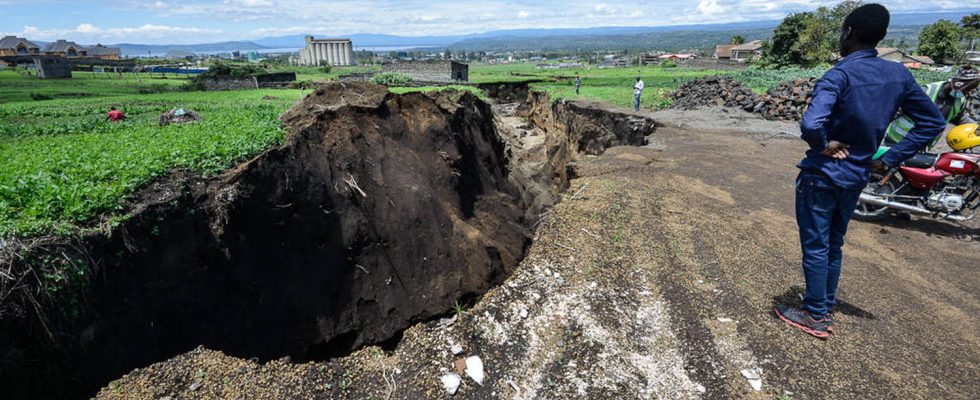The east of the African continent is marked by a major fault which could eventually develop the opening of a new ocean.
The shapes of the seas and continents evolve and vary over the centuries. And an evolution characteristic of the formation of a new ocean would be taking place, at this very moment, under the watchful eyes of researchers. A rift is indeed being formed on the African continent. A rift is first signaled by the appearance of a fault in the earth’s crust. Then over several million years, this fault can tear apart areas as large as a continent. Water from the oceans can then flow into it and create a new sea. The Afar rift is the only one present on Earth today that risks opening up to water.
Researchers from Virginia Tech in the United States conducted an extensive study of the East African Rift Rift System using various computer models and GPS instruments over a period of more than 12 years. Their results, published in the Journal of Geophysical Researchshow that at the level of the rift, the earth’s crust thins and forms a collapse ditch under the action of stretching forces.
When should this new ocean appear?
According to specialists quoted in the Geological Society of London, this huge depression could soon divide Africa. The impressive fissure features two sets of parallel fractures in the Earth’s crust: the Eastern Rift, which crosses Ethiopia and Kenya, and the Western Rift, which extends in an arc from Uganda to Malawi.

However, the outcome of this rift, which appeared 25 million years ago, still raises many questions. According to geologists, upon stretching or rupture, deformation accompanying the East African Rift is expected to follow predictable directional patterns relative to the rift. This would result in the separation of the Horn of Africa from the African continent in several tens of millions of years. Somalia, Tanzania, Kenya and a large part of Ethiopia would then be concerned.
FACT: The East African Rift Valley stretches over 3,000km from the Gulf of Aden in the north down to Zimbabwe in the south. pic.twitter.com/zZWbtA9UFa
— East Africa Facts (@east_facts) June 28, 2021
In their recent study, US researchers used 3D models to explore the processes driving the East African Rift System. But according to the CNRS“many observation campaigns will still be needed to unravel the mysteries of the opening of the future ocean, while ensuring the protection of surrounding ecosystems and activities.”
